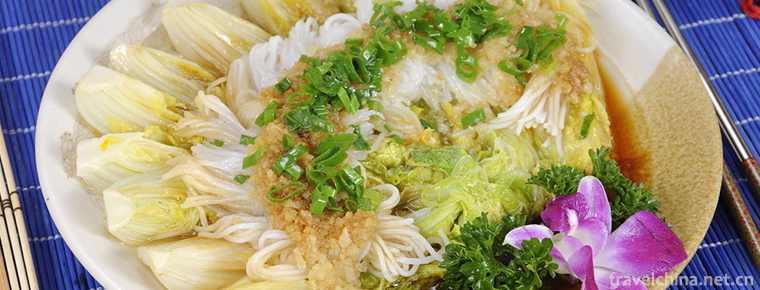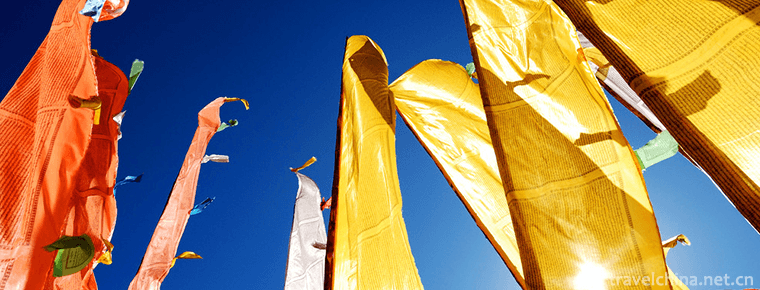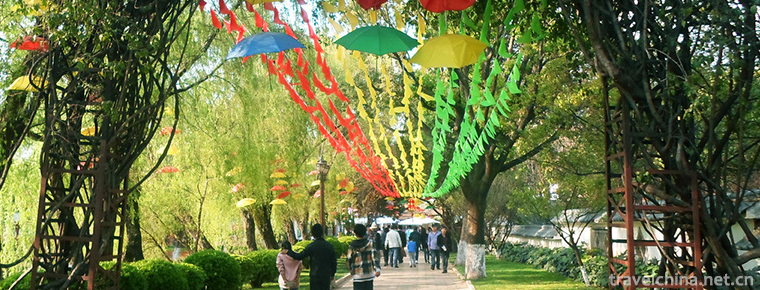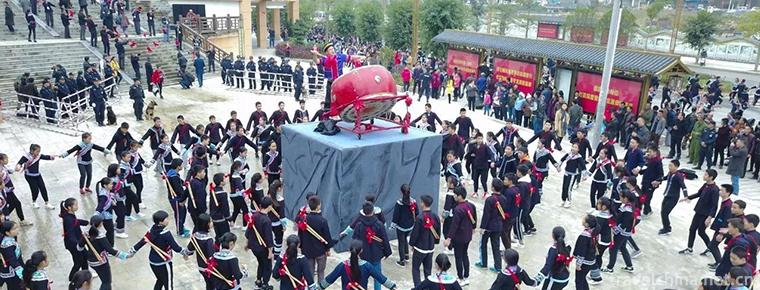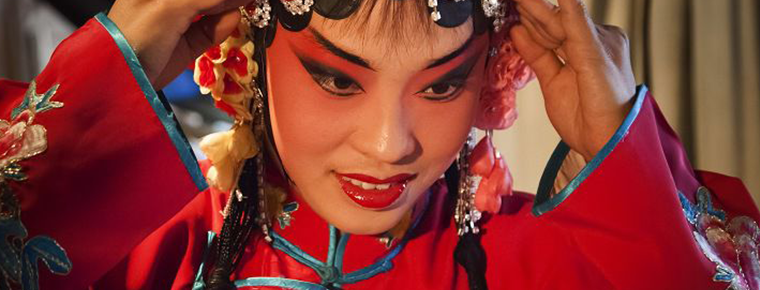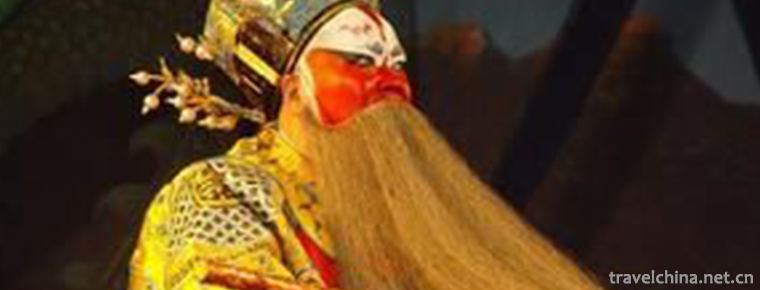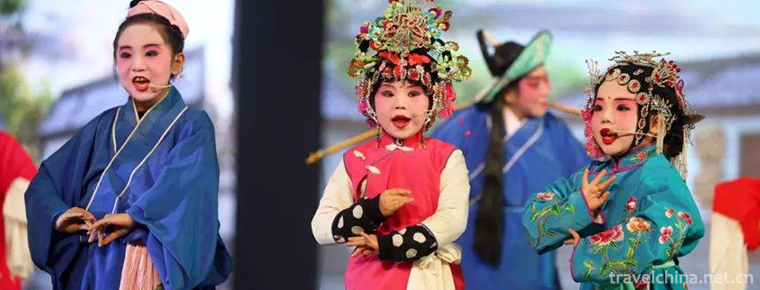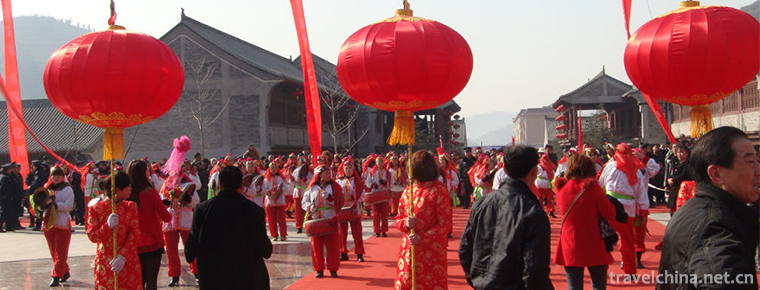Luzhi Ancient town
Luzhi Ancient town
Yongzhi Ancient Town belongs to Wuzhong District of Suzhou City. It is located in the east of Suzhou City. It is 18 kilometers west of Suzhou City and 58 kilometers east of Shanghai.
Yongzhi Ancient Town has a history of 2500 years. It has many rivers, bridges, alleys, ancient houses and celebrities. The main scenic spots are Baosheng Temple, Ye Shengtao Memorial Hall, Jiangnan Cultural Park and so on.
Yongzhi Ancient Town was rated as a national 4A-level tourist scenic spot in 2001, a famous historical and cultural town in China in 2003, a beautiful environment town in China in 2004, a town of folk culture and art in China in 2008, a famous tourist town with Chinese characteristics in 2011, and a new "Preview of World Cultural Heritage in China" in 2012. Standby List .
Historical evolution
According to the textual research of the prehistoric cultural relics unearthed in Yongzhi area, about 6,000 years ago, there were ancestors living together here.
In the twenty-sixth year of the reign of the King of Qin (221 years ago), Wu County was established, which belongs to Wu County.
Tang Wu Zetian Long Live Tongtian First Year (696), Wu County is divided into Changzhou County, the territory belongs to Changzhou County.
During the period of the Northern Song and Yuan Feng (1078-1085), the territory belonged to Yiren Township, Wugong Township and Sutai Township.
After the 14th year of Hongwu Ming Dynasty (1381), the territory belonged to Yiren Township (Renyili), Wugong Township (Throne), Sutai Township (Zhenfengli).
In the thirty-fifth year of the Ming Dynasty (1607), Liuzhi (now Yongzhi) set up a patrol department in the southwest of Fuchang Bridge and moved to Liuzhi.
In the second year of Yongzheng Qing Dynasty (1724), the author analyzed the location of Yuanhe County in Changzhou County, which belongs to 19 cities of Renyi East, Yiren Township, Yuanhe County, 20 cities of Upper, Middle and Lower Wugong Township and 26 cities of Zhenfeng Libei, Sutai Township.
In the twenty-sixth year of Qianlong reign of the Qing Dynasty (1761), Yuanhe County Prefecture Division Defense Office was established.
In 17 years of the Republic of China, Yongzhi Township Autonomous Institute was withdrawn and Yongzhi Township Bureau was established.
In October 1985, the town-village system was implemented. The people's government of Yongzhixiang changed its name to the people's government of Yongzhizhen.
In October 1998, Yongzhi Ancient Town was officially opened to the outside world.
In 2001, Yongzhi Ancient Town was rated as a national 4A tourist scenic spot by the National Tourism Administration.
In 2003, Yongzhi Ancient Town was named "one of the ten famous historical and cultural towns in China" by the Ministry of National Construction and the State Administration of Cultural Relics.
Ancient town layout
Yongzhi ancient town is surrounded by water, Chenghu, thousands of lakes, Jinji Lake, Dushu Lake and Yangcheng Lake are surrounded by the town. Wusong River, Qingshui River, Dongtang River, Nantang River, Jiepu River and Dazhi River are interlaced.
The center of Yongzhi Ancient Town is the intersection of Nanshi River, Dongshi River and Xishi River. In addition, many branches of the town are intricate and crisscross like dense networks, which creates a unique situation of Yongzhi River, Bridge and Water Lane.
The streets of Yongzhi Ancient Town are divided into two types, parallel along the river, Shangtang Street in Hexi and Hebei, and Xiatang Street in Henan and Hedong. Most of them are commercial buildings and residential areas. Generally, the street is 2.5-5 meters wide. Vertical to the river, the lane is generally about 1-3 meters wide. The farthest lane is 150 meters long. The houses in the lane have three, five and six entries, and the deepest is seven entries. There are also preparations that allow only one person to pass, which are the separation between residential neighbourhoods. Streets and alleys are paved with stone slabs or marbles, with smooth running water and dry stops in rain. There are shops on both sides, or white walls and tiles.
Scenic spots
Baosheng Temple
Baosheng Temple is a thousand-year-old temple in the south of the Yangtze River. The sculpture wall of Luohan in the Temple Museum is handed down as the sculpture of Yang Huizhi in the Tang Dynasty. Baosheng Temple, formerly known as Baosheng Temple, was built in the second year of Liang Tianjian (503 A.D.) and has a history of more than 1500 years. The existing buildings in the temple include Ershan Gate, Tianwang Hall, and the Museum of Antiquities. In 1961, the Luohan statue of Baosheng Temple was listed as one of the first key cultural relics protection units in China.
Jiangnan Cultural Park
Jiangnan Cultural Park is located in the southeast of Yongzhi Ancient Town, which is closely linked with the ancient town. It covers an area of more than 150 mu. It is a classical garden with the characteristics of Jiangnan Waterfront, which integrates leisure, entertainment and sightseeing. Jiangnan Water Township Cultural Park has built such landscapes as "Yongzhi Water Township Women's Clothing Museum", "Yongzhi Historical Heritage Museum", "Fuli Street of Sheng Tang Dynasty", "Fuli Academy", "Leisure Water Street", "Performing Arts Workshop", "Central Garden Area" and "Ancient Platform".
Rice in Wansheng
The prototype of Wancheng Hengmixing is located on the West Bank of Nanshihe River in Yongzhi Town. Located at the South Gate of Yongzhi ancient town, it travels northward from Nantanggang to Nanqiao, or eastward from Tiantuijiang to Yamen Bangqiao to Wancheng Hengmihang River port.
Ye Shengtao Memorial
Ye Shengtao Memorial Hall, the site of Ye Shengtao's "Wuxian Fifth Higher Primary School", was listed as the base of moral education in schools of Jiangsu Province and the base of patriotism education in Jiangsu Province. The exhibition hall mainly introduces Ye Laohui's brilliant life and his outstanding achievements and great contributions in education, literature and social activities from different aspects, especially his educational reform practice and literary creation during the period of Yongzhi.
Shen Zhai
Shen Zhai is a well-preserved luxury residence in the ancient town of Yongzhi, the former residence of Mr. Shen Baihan, a member of the League and educator of Yongzhi. Located between "Xihui Xiao City", one of the eight sceneries in Fuli, the architectural layout has the characteristics of official and commercial, front shop, back house, left square and right shop. The original building area of Shenzhaiyuan is more than 3500 square meters. Now it is restored and opened to the west, about 1000 square meters.
Wang Tao Memorial Hall
Wang Tao Memorial Hall is located at 6 Xiatang Street, Yongzhi City. It is a residential building with Qing Dynasty architectural style and covers an area of 800 square meters. Sitting in the East and West dynasties, it is divided into three parts: Wang Tao's life story showroom, Wang Tao's former residence and Taoyuan.
East Bridge
Located at the easternmost end of Yongzhi ancient town, the East Bridge is the largest ancient stone bridge in the ancient town area. A bridge spans two cities, Wuxian Plastic Factory in the north of the bridge, Daqiaowan Village in the south of the bridge, Yongzhi Dongshihe River in Wuxian City and Dongtang Port in Kunshan City in the west of the bridge.
Sanyuan Bridge Wan'an Bridge
Sanyuan Bridge, commonly known as Sanguan Bridge, is named for its location in Sanguan Lane of Shangtang, Zhongshi City. The East Bridge Pier connects with the south pier of Wan'an Bridge on the North side, forming a pair of "three-step and two-bridge" landscapes in Zhongshi Street. Two bridges, one high and one low, are located in the middle of the tourist area of the ancient town. Wan'an Bridge, commonly known as the Low Bench Bridge, is located in Xikou, Niujingbang, Xiatang, Zhongshi City, and is a granite girder bridge. The south of the bridge is connected with the east of the Sanyuan Bridge, which becomes a pair of "double bridges" on the Zhongshi River.
Value of ancient town
The ancient town of Yongzhi is surrounded by a large number of lakes, ponds and ponds. The appearance of the town maintains the characteristics of traditional Chinese architecture. Yongzhi has different styles of bridges, stone paved streets, revetment railings carved with a variety of beautiful patterns. The handicraft made by women has extraordinary creativity and shows the unique value of traditional dress. The handicraft of dress making of Yongzhi women has been listed as the first batch of intangible cultural heritage by the state. The ancient sites and historical relics discovered in Yongzhi include: Baosheng Temple, built in the 6th century A.D. in the Southern and Northern Dynasties, Luohan Wall, Lu Guimeng Tomb, Pu Ji Pool, Fengyang Bridge, Guangji Bridge constructed in the 9th century A.D. in the Tang Dynasty, Zhongmei Bridge constructed in the 11th century Song Dynasty, Dongmei Bridge constructed in the 15th century, Jinyang Bridge, Wanan Bridge, Jinan Bridge constructed in the 17th century in the Ming Dynasty. Sanyuan Bridge, Datong Bridge and other ancient buildings. Yongzhi Town preserves many ancient buildings such as bridges, temples, celebrities'former residences, archways, ancient wells and so on. These buildings, whether high or low, constitute an extremely rich space artistic conception. The large-scale house here has reasonable layout, appropriate size, elegant color and exquisite decoration. Ordinary residential buildings look lightweight and concise. Folk houses along the street form. The buildings in front of them are shops, while the buildings behind them are houses or workshops. The ancient ancestors used the Grand Canal of Beijing and Hangzhou to build houses around rivers and lakes and engage in production. This way of life embodied the industriousness and wisdom of the ancestors and was of great significance in human history.
Protection of ancient towns
In 1998, the protection and development project of Yongzhi Ancient Town was officially launched. Following the principle of authenticity, Yongzhi people successively carried out projects such as "wearing clothes and hats" and "repairing old buildings as old ones" in ancient towns, and Yongzhi ancient town formulated strict "family rules". Those involving cultural protection, cultural control and historical buildings must be strictly examined and approved. In December 2012, the Old Town Protection and Development Management Committee was established in Yongzhi, responsible for the construction and management of the Old Town. In 2013, 100 million yuan was invested in protective renovation of Dongshi River, including housing renovation and reconstruction, river revetment renovation and ancient bridge renovation. Apart from the renovation and reconstruction of houses, five cultural relic-protected bridges, such as Hefeng Bridge and Huanyu Bridge, have also been restored.
Tourism information
Ticket information
Ancient Town Scenic Spot Coupon Ticket: 78 yuan
Zhang Linyuan: 20 yuan
Traffic information
Buses and Tourist Air Conditioning Special Line Cars
Shanghai-Yongzhi
Bus: Zhongshan Passenger Station Yongzhi Bus Station, 806 Zhongshan North Road, Shanghai
Fleet: An average of one hour, 22 flights a day, about 2.5 hours by car.
Tourist Air Conditioning Line Car: I: Gate 2, Hongkou Stadium, Shanghai
II: Shanghai Yangpu District Sports Center
III: Under escalator No. 5 of Shanghai 80,000 Stadium
Suzhou-Yongzhi
Bus: Zhenmen 18, Wuzhong District Bus South Station 52, Suzhou Railway Station Square 518 Yongzhi Bus Station about 1.5 hours.
Nanjing-Yongzhi
Travel air conditioning special line car: Nanjing Bus Station Suzhou North Bus Station Yongzhi Bus Station
Hangzhou-Yongzhi
Bus: Hangzhou East Station Suzhou South Station Yongzhi Station
Self driving
Shanghai - Yongzhi (60km)
(1) Shanghai City-Shanghai-Nanjing Expressway-Su-Kun-Tai Expressway (Suzhou East Round City Line) -Yongzhi Exit
(2) Shanghai downtown-A9-A30-Shanghai-Changzhou Expressway under direct export
Suzhou - Yongzhi (18km)
(1) Suzhou-Jinji Lake Avenue (Airport Road) -Yongzhi
(2) Suzhou-Oriental Avenue-Yongzhi
(3) Suzhou-Circle Expressway-Yongzhinan Exit (Yongzhi Airport Road Exit)
Nanjing-Yongzhi (230km)
Nanjing-Shanghai-Nanjing Expressway-Suzhou East Round-Yongzhi Export
Hangzhou - Yongzhi (170km)
Hangzhou-Sujiahang Expressway-Suzhou Circum-City Expressway (Su-Hu Expressway) - Yongzhinan Export (or Yongzhi Airport Road of Su-Kun-Tai Expressway)









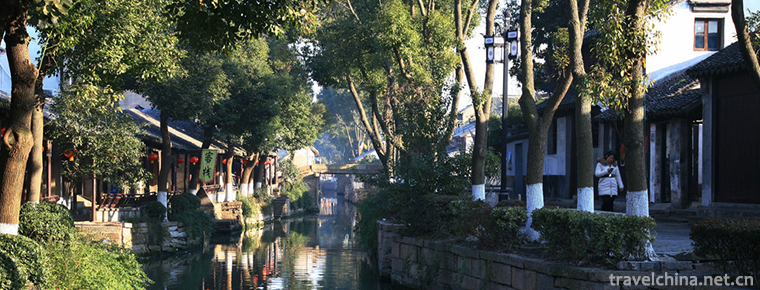
-
Vegetable party
Vegetable party (alias Su Chunjuan) is one of the common local traditional snacks in Guiyang. It can be seen almost everywhere in the streets of Guiyang. This dish is crisp.
Views: 176 Time 2018-11-05 -
Zhenjiang Sanshan Scenic Area
Zhenjiang Sanshan Scenic Area is located in the southwest of Jiangsu Province and on the South Bank of the lower reaches of the Yangtze River.
Views: 124 Time 2018-12-06 -
Grand View Park
Daguan Park is located in the Dianchi Lake, about 2 kilometers west of Kunming City. It was built in the first year of Hongwu in the Ming Dynasty (1368 A.D.). In the thirty-fifth year of Emperor Kangx.
Views: 189 Time 2019-01-06 -
Panlongxia Ecotourism Area
Panlongxia Ecotourism Area is located in the northwest of Deqing County, Guangdong Province, about 28 kilometers away from the county seat. The whole ecotourism area covers an area of 30,000 mu.
Views: 152 Time 2019-02-07 -
Buyi Peoples Changing Dance
The Bouyei people, who can sing and dance well, have created colorful Bouyei culture. Buyi people like singing and dancing to express their feelings whether they.
Views: 102 Time 2019-04-04 -
Jin Opera
Jin Opera is Shanxi Bangzi, an important drama in northern China, also known as Zhonglu Opera, Chinese traditional opera. It was named after Fenyang, Xiaoyi, Qixian, Taigu and Taiyuan, which sprang up.
Views: 177 Time 2019-05-07 -
Miao folk songs
According to its content, Miao folk songs can be divided into Youfang song (love song), wine song, bitter song, anti-song, funeral song, labor song, political song, children's song, riddle song and so.
Views: 88 Time 2019-06-05 -
Shaoxing opera
Shao Opera, a traditional Chinese opera. Originally known as "Shaoxing Chaotian Bomb", commonly known as "Shaoxing Daban", it originated from Qin Opera and was named Shaoxing Opera.
Views: 183 Time 2019-06-14 -
Xinjiang Opera
Xinjiang Opera, commonly known as "Xinjiang Xiaoqu", is a kind of local opera with unique style, which has been gradually formed and perfected after Shaanxi Opera, Qinghai Pingxian Opera, La.
Views: 80 Time 2019-07-06 -
Neutralization Festival
Zhonghe Festival, a traditional Chinese folk festival, is on the second day of February, but the date at that time was on the first day of February. With the evolution of history, it was changed to th.
Views: 379 Time 2019-08-03 -
Environmental protection in Mianyang
In 2018, the water quality of Fujiang, Kaijiang, Zijiang, Anchang River, Furong River, Tongkou River and Luban reservoir in Mianyang City accounted for 100% of the total water quality. Among them, Fujiang River, Tongkou River, Zijiang River and Anchang.
Views: 343 Time 2020-12-14 -
Dazhou Sports
By the end of 2019, Dazhou city has a total of 9 stadiums and stadiums, sports lottery revenue of 242 million yuan, and 694 new sports fitness projects for farmers. .
Views: 335 Time 2020-12-20
